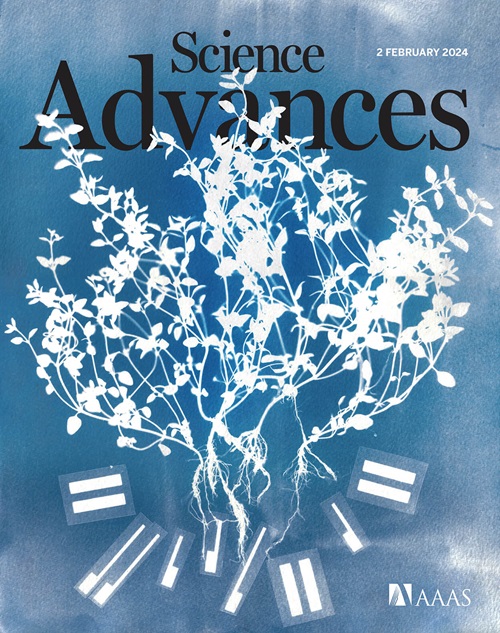A phosphorylation-driven ubiquitination switch fine-tunes Alfin-like 7–induced ROS signaling in plant immunity
IF 11.7
1区 综合性期刊
Q1 MULTIDISCIPLINARY SCIENCES
引用次数: 0
Abstract
Maintaining reactive oxygen species (ROS) homeostasis is essential for balancing growth-defense trade-offs in plants. Although the transcription factors (TFs) that regulate ROS production and scavenging genes have been studied, the regulation of these TFs to control ROS accumulation remains poorly understood. Here, we demonstrate that during N nucleotide-binding leucine-rich repeat–mediated immunity, Alfin-like 7 (AL7) is ubiquitinated by the ubiquitin protein ligase E3 component N-recognin 7 (UBR7). UBR7 interacts with AL7 and acts as a molecular brake to mediate the ubiquitination of AL7 at lysine-20, leading to its subsequent proteasomal degradation. UBR7 functions upstream of AL7 to reduce AL7-induced ROS accumulation during N-mediated defense. The phosphorylation of AL7 at serine-174 enhances its interaction with UBR7, thereby increasing AL7 ubiquitination and reducing AL7 stability. Our findings reveal a mechanism by which ROS accumulation is regulated through the phosphorylation and ubiquitination of a TF during the immune response. This ensures precise switching of ROS signaling to prevent excessive defense responses.

磷酸化驱动的泛素化开关在植物免疫中微调alfin - 7诱导的ROS信号
维持活性氧(ROS)的稳态对于植物生长与防御的平衡至关重要。虽然已经研究了调节ROS产生和清除基因的转录因子(tf),但对这些tf控制ROS积累的调控仍知之甚少。在这里,我们证明了在N核苷酸结合丰富亮氨酸的重复介导免疫过程中,泛素蛋白连接酶E3组分N-识别蛋白7 (UBR7)泛素化Alfin-like 7 (AL7)。UBR7与AL7相互作用,并作为分子制动器介导AL7在赖氨酸-20处的泛素化,导致其随后的蛋白酶体降解。在N介导的防御过程中,UBR7在AL7上游发挥作用,减少AL7诱导的ROS积累。AL7丝氨酸-174位点的磷酸化增强了其与UBR7的相互作用,从而增加了AL7的泛素化,降低了AL7的稳定性。我们的发现揭示了一种机制,通过免疫应答过程中TF的磷酸化和泛素化来调节ROS积累。这确保了ROS信号的精确切换,以防止过度的防御反应。
本文章由计算机程序翻译,如有差异,请以英文原文为准。
求助全文
约1分钟内获得全文
求助全文
来源期刊

Science Advances
综合性期刊-综合性期刊
CiteScore
21.40
自引率
1.50%
发文量
1937
审稿时长
29 weeks
期刊介绍:
Science Advances, an open-access journal by AAAS, publishes impactful research in diverse scientific areas. It aims for fair, fast, and expert peer review, providing freely accessible research to readers. Led by distinguished scientists, the journal supports AAAS's mission by extending Science magazine's capacity to identify and promote significant advances. Evolving digital publishing technologies play a crucial role in advancing AAAS's global mission for science communication and benefitting humankind.
 求助内容:
求助内容: 应助结果提醒方式:
应助结果提醒方式:


